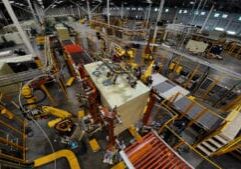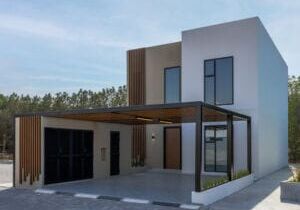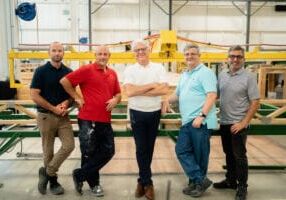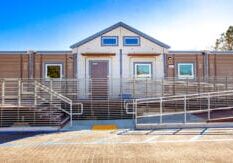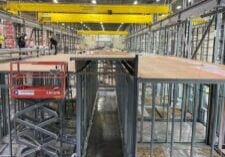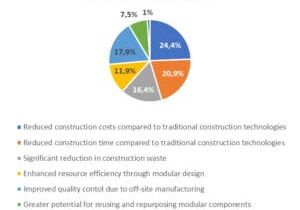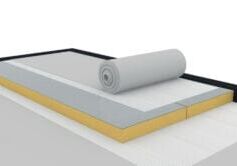How Climate Change Will Impact Existing Fleet Units – Brace Yourself!

Tom Hardiman, CAE, is the Executive Director of the Modular Building Institute.
Several years ago, MBI worked with the ICC to get language included in the International Building Code to protect existing fleet assets from having to be brought up to new codes upon relocation. Many code officials applied the “moved structures” section of the IBC to fleet units being relocated.
MBI worked to eliminate the “moved structures” section completely form the IBC and added a new section (3113) specific to relocatable buildings. That section of the code, included in the 2018 IBC, makes it clear that any newly constructed relocatable building must comply with the code for new construction. However, any existing building, one for which a permit has been pulled, is governed by Chapter 14 of the International EXISTING Building Code (IEBC) not the IBC.
General contractors, new to modular construction, were on the hunt for presentations that might help answer questions about how to efficiently and effectively get started in the offsite industry. The Lounge proved to be a fruitful space to connect GC’s with other organizations to teach, learn, and collaborate. If we want to grow our industry we need to consistently create easily accessible training resources and make sure we are making space for this type of learning at offsite conferences.
Pittsburgh-based Module has been working on training standards since their launch of the Last Mile Network that includes the manufacturers, architects, transporters, and GC’s who are trained on the MODULE building system. The resulting training manual, the Off-Site Construction Playbook, includes sections on Design & Pre-Construction, Site and Set Day Prep, On-Site MEP Connections and Completion, and Post-Set On-Site Finish Work. Module is now helping other companies create their own Playbooks.
In summary, Chapter 14 states that any building relocated into an area must comply with the applicable site conditions, namely wind, snow, seismic, and flood hazards. By including this “grandfathering” provision for existing fleet, MBI has been able to protect these assets and allow them to continue to be used, so long as they meet the local site conditions.
This rarely has posed any issues for our industry, because how often do wind, snow, and seismic requirements change after all? Well….as it turns out, some jurisdictions are looking at their site requirements due to the impact of climate change on buildings. Here’s a few ways climate change is impacting existing building inventory:
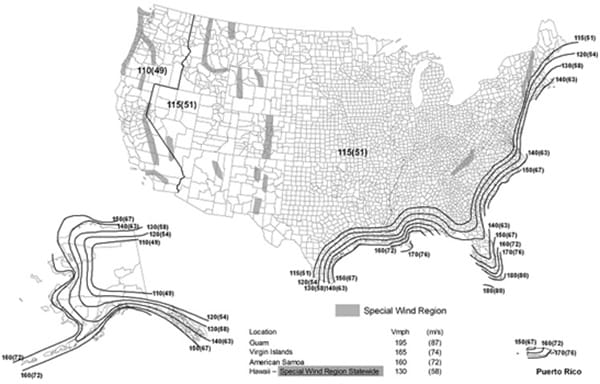
2015 IBC 1609.3 Ultimate design wind speed.
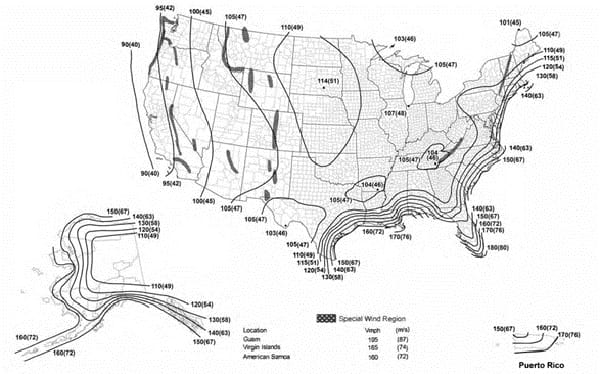
2018 IBC 1609.3 Basic design wind speed.
- Higher temperatures can lead to increased cooling demands, which can strain HVAC systems and lead to higher energy, maintenance, and / or replacement costs.
- Stronger storms, hurricanes, and floods can damage building exteriors, foundations, and infrastructures like drainage systems. This can lead to more frequent repairs and higher maintenance costs.
- Increased precipitation and humidity can lead to issues like mold growth, rot, and deterioration of building materials as well as impacting indoor air quality and occupant health.
- In regions where temperatures fluctuate around the freezing point, more intense freeze-thaw cycles can cause cracks in foundations, walls, and pavements, leading to structural damage.
- As climate patterns shift, buildings may need retrofitting to improve energy efficiency, such as better insulation or updated HVAC systems, to address the changing climate.
- Increased risks from climate change can lead to higher insurance premiums and property devaluation, affecting the economic viability of maintaining certain buildings.
In reviewing the design wind speed map in Chapter 16 of the IBC for example, the requirements changed from the 2009 version and the 2012 code and again from the 2015 version to the 2018 code. To add to the confusion between 2015 and 2018, the terminology changed as well, from “ultimate” design wind speed to “basic” design wind speed. A handy conversion chart was also included in the codes to help “simplify” things between the two wind speeds.
In some areas, the requirement increased while other regions saw a decrease in wind design requirements. In fact, most areas of the country did see a decrease in wind speed design criteria based on the latest available data.
As an industry, we cannot expect the site requirements to remain unchanged over long periods of time, encompassing multiple code cycles. It is critically important for owners to follow potential building code changes relative to these site-specific conditions as it could impact all existing units labeled and weaken our “grandfather” provision. Remember, our code language protects only the box, not the site.
More from Modular Advantage
Resia: Breaking All the Rules
Resia Manufacturing, a division of U.S.-based Resia, is now offering prefabricated bathroom and kitchen components to industry partners. Its hybrid fabrication facility produces more precise bathroom and kitchen components (modules) faster and at lower cost than traditional construction. Here’s how Resia Manufacturing does it.
How LINQ Modular Innovates to Bring Modular To The Market in the UAE and Beyond
LINQ Modular, with an office and three manufacturing facilities in Dubai, is a modular firm based in United Arab Emirates. The company is on a mission: to break open the housing and construction markets in the Gulf Cooperation Council (GCC) area with modular.
ModMax: Redefining Modular Construction with Confidence and Precision
ModMax was born out of frustration—frustration with five persistent pain points in modular construction: Permitting bottlenecks. Production delays. Rigid designs. Disconnect between “the office” and the field. Lack of transparency and communication.
LifeArk: Disaster-Resilient Housing from Recycled Plastic and 100-year-old Technology
Wee compares LifeArk’s housing units to Yeti coolers, as they are built similarly. Each component takes 15 to 20 minutes to manufacture, has an R-value of 40, and includes molded slots and chases for wiring, plumbing, fire sprinklers, and other utilities.
Building the Future of Modular Edge Infrastructure
The edge data center market is expanding rapidly, driven by the surge in AI workloads, IoT adoption, and the need for localized compute power. In these environments, sustainability, scalability, and reliability are non-negotiable. Cooling is among the most complex challenges for operators—and one of the most decisive factors in long-term success.
Accelerating Light-Gauge Steel Construction: A Semi-Automated Digital Workflow for Off-Site Projects
For construction professionals, the message is clear. By adopting semi-automation and digitalization, companies can deliver projects faster, more accurately, and more profitably, while also building stronger collaboration across teams. The approach is not about replacing people with machines, but about empowering people with better tools and processes.
Why Modular Data Centers Are Gaining Momentum
Artificial intelligence, high-performance computing, and edge applications push the limits of traditional “stick-built” data centers. They take years build, often struggle with high density workloads, and aren’t optimized for deployments near end users. Modular data center platforms are purpose-built to address these challenges, offering flexibility and scalability to adapt to evolving technologies, while opening new opportunities for the modular construction industry.
Supply Chain Innovation in Action: 5 Habits Every Modular Leader Should Practice
By applying these principles to supply chain practices — collaborative planning, strategic procurement, scenario modeling, digital tools, and transparent forecasting — construction leaders can build value chains that are not just efficient and agile, but truly innovative.
Exploring the Role of Modular Integrated Construction (MiC) in Advancing Circular City Principles – A Survey of Stakeholder Perspectives
The survey findings highlight the significant potential of Modular integrated Construction (MiC) in advancing the development of circular cities. By reducing costs, accelerating construction timelines, and minimizing waste generation, MiC offers a promising approach to sustainable urban development.
The Use of MS POLYMER™-Based Sealants and Adhesives in Modular Building
These products combine flexibility and elastic recovery with excellent adhesion to different substrates and have already shown their usefulness in traditional construction. Now it’s time for them to be put to use in the modular construction industry.

